MXA INTERVIEW: ROGER DeCOSTER ON LIFE IN THE FRONT OFFICE
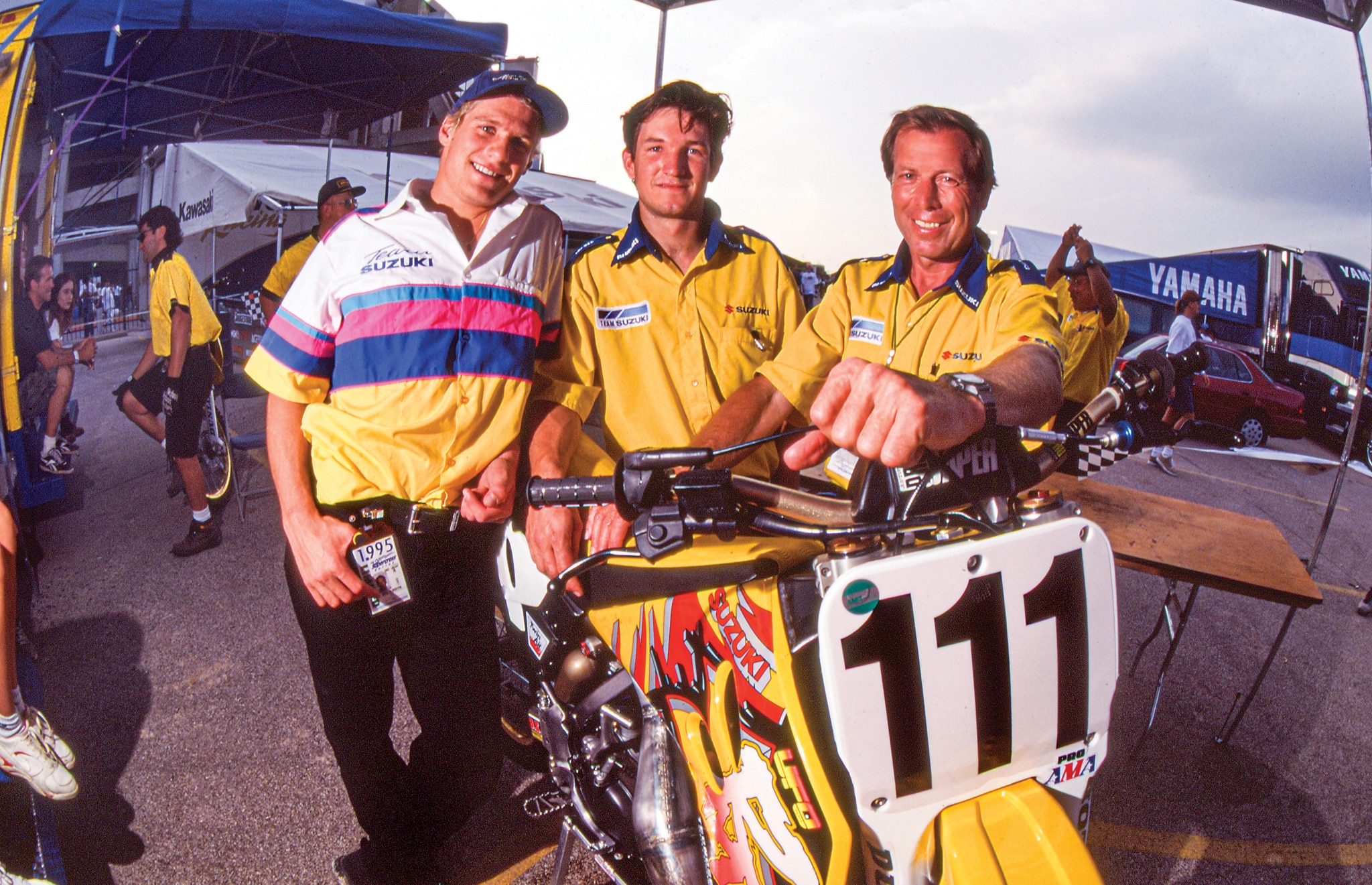
BY JIM KIMBALL
ROGER, LET’S BEGIN WITH YOUR FINAL YEAR OF RACING WHEN YOU MOVED FROM SUZUKI TO HONDA. I was frustrated with Suzuki because the 1977 bike was good, but then in 1978, they made the bike extremely tall with long-travel suspension. On sand tracks, it was really difficult to ride. On hard tracks, it was not as bad, but on a sand track it was terrible. They did not seem interested in changing the bike to my liking. They thought that I was getting old and that they needed to hire younger riders. So, 1979 was my last year racing for Suzuki, and the bike was a little bit better, but Honda had been asking me for a couple of years to come to them.
I still felt loyal to Suzuki, but I could not go in the direction they wanted, and since Honda was willing to hire me, I took the Honda offer. They gave me a three-year deal where I could race one or two years and then move into the management of the American team.
DID THE OPPORTUNITY TO MOVE INTO RACE MANAGEMENT INTEREST YOU? Yes, even though my own racing was winding down, I felt I had much more to offer. At Honda, I won the final Grand Prix of the season and finished fifth overall in the 500 World Championship. After that final race, I agreed to start testing for Honda.
DID YOU HAVE ANY LAST-MINUTE THOUGHTS ABOUT WANTING TO RACE ANOTHER YEAR AFTER WINNING THE FINAL GP OF THE SEASON? I had pretty much made up my mind that I was ready to stop, but I did not tell anybody. I wanted to finish on a good note. At that final GP, I had qualified first and won both motos going away. I thought, “This is the right time.” I did not want to go down the path where I could not win. One week after my last race in Europe, I was in the United States with Honda’s Dave Arnold. Dave had been my Honda mechanic in my last season. We worked together on preparing the team for the next season.
“I TOOK THE HONDA OFFER. THEY GAVE ME A THREE-YEAR DEAL WHERE I COULD RACE ONE OR TWO YEARS AND THEN MOVE INTO THE MANAGEMENT OF THE AMERICAN TEAM.”
YOU TOOK AMERICAN HONDA TO THE NEXT LEVEL. THE TEAM STARTED WINNING, AND YOU ALSO HELPED MAKE THE MOTOCROSS DES NATIONS RELEVANT. We had young guys on the Honda team, and that was a big boost when we talked about the 1981 Motocross des Nations. There was a lack of interest in Team USA going to the Motocross Des Nations in the previous years. I knew the U.S. had good riders and felt that it didn’t make sense to hold a Motocross des Nations without an American team. Motocross Action Magazine had started raising funds for a yet-to-be-determined team, but they had trouble getting the top riders to agree to go.
SO, WHAT HAPPENED TO CHANGE THAT? MXA’s Dick Miller was a fan of the des Nations, and he suggested that since no one else wanted to go, I should send the complete Honda team. Bel-Ray threw their support behind the effort in the USA and Europe. They were happy to help us.
We decided to take the entire Honda team. We said, “We will go and be Team USA.” We made the decision without telling Honda of Japan about it, and by the time they found out, we were already on our way. Honda was not excited about it initially, but after we won the 1981 Motocross and Trophee des Nations, we were big heroes, and everything was fantastic.
IN THE HISTORY OF U.S. MOTOCROSS, THAT 1981 MOTOCROSS OF NATIONS HAS TO BE ONE OF THE SHINING MOMENTS. That was a once-in-a-lifetime opportunity. We took it, and it worked out fantastic. The Europeans did not take Team USA seriously. We ended up winning, which was very unlikely, because the MXDN was held at Bilstein, which is a very deep sand track. But, we went there a week early and did a lot of testing. We had a lot of problems with bikes seizing, but we resolved the problems before the weekend, and on race day, everything went well. The technicians back at Honda of Japan did a really good job of helping us fix our problems via Telefax.
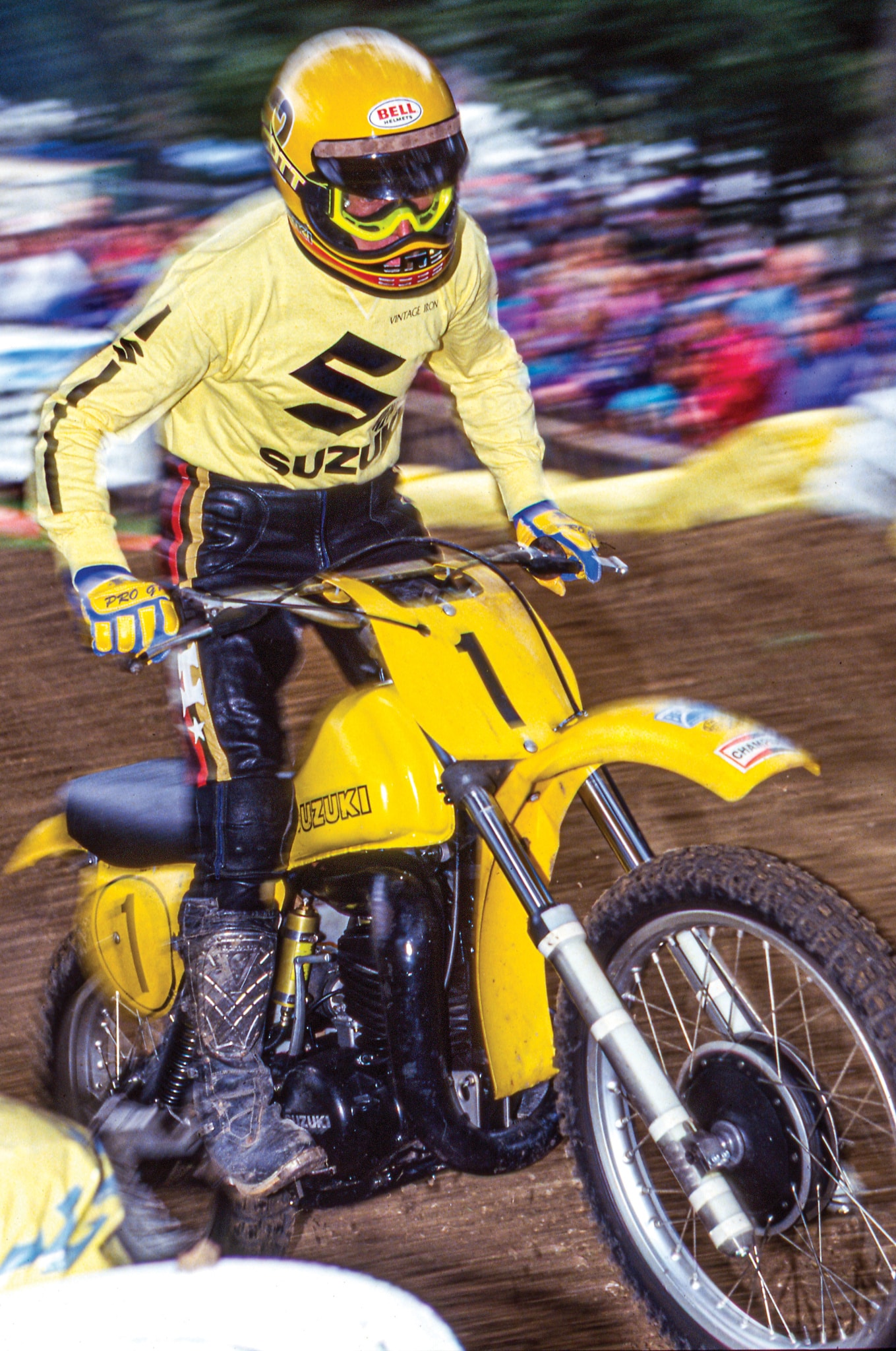
WERE THE BELGIAN FANS RESENTFUL THAT YOU WERE MANAGING TEAM USA INSTEAD OF TEAM BELGIUM? Yes, I did feel some anger. But, before I committed to the American team, I asked the Belgian Federation about helping them for the 1981 Motocross des Nations. The des Nations was always a race that was important to me. I liked being a part of it as a racer and later as a team manager. The Belgian Federation said that they did not need my help, so I felt completely free to help the American team.
WAS IT A DIFFICULT TRANSITION FROM RACING TO MANAGING? Yes, it was difficult. The first year, it was very tough. I would get frustrated and felt that “I could still be winning” and “I should have raced another year or two,” but that was only during my first year of retiring from racing.
YOU ACCOMPLISHED A LOT IN YOUR 10 YEARS WITH THE AMERICAN HONDA TEAM. WHAT WAS THE HIGHLIGHT? The Motocross Des Nations wins were big, and especially doing it 13 straight years in a row. Of course, at Honda we won many championships with multiple riders—from Donnie Hanson to Ricky Johnson to Jeff Stanton to Jean Michael Bayle—and we were able to help many other riders win races. Riders like David Bailey and Johnny O’Mara were so great to work with. I have a lot of good memories from my Honda days, but it is hard to say which one was the best. In retrospect, winning National and Supercross titles was what we were paid to do.

TELL US ABOUT SOME OF THE HONDA RIDERS YOU WORKED WITH. Well, many of the champions had very different personalities. Johnny O’Mara had a lot of talent but was very emotional. David Bailey was the first rider to figure out that you had to ride slower to go faster. What I liked most about Ricky Johnson was that when he won, he was able to make the whole team feel like they won. Jeff Stanton was very serious; he kept his head down and put in the work.
WHAT HAPPENED THAT CAUSED YOU TO LEAVE TEAM HONDA? Honda’s sales and marketing divisions got more involved and wanted us to go through them rather than deal directly with Honda of Japan. It became very frustrating. They would promise things to the riders that we could not deliver. We had always been straight with our riders. When they asked for things that were impossible, we told them so. Also, I had never taken any time off from Honda since my last race at the Luxembourg Grand Prix. I thought I could take a vacation and see some of my old friends who lived around the world. That didn’t sit well with sales and marketing. I was essentially fired.
“I WAS FRIENDS WITH JODY WEISEL FROM MOTOCROSS ACTION MAGAZINE, AND HE ASKED ME WHAT MY PLANS WERE. I TOLD HIM I DIDN’T HAVE ANYTHING SOLID, BUT I MIGHT TAKE AN OFFER TO RUN AN ITALIAN HONDA TEAM.”
WHAT CAME NEXT IN YOUR CAREER? I was friends with Jody Weisel from Motocross Action Magazine, and he asked me what my plans were. I told him I didn’t have anything solid, but I might take an offer to run an Italian Honda team. Jody didn’t think that was a very good idea and asked me if I wanted to work at the magazine. He said I could test bikes, write tech articles, and do whatever I wanted to help both MXA and Dirt Bike Magazine. I knew how to test bikes, so it was easy for me. Riding all the different bikes was the best part of the job. I ended up working there for a couple of years before Suzuki called me.
DIDN’T YOU ALSO PROMOTE A COUPLE OF RACES AT GLEN HELEN? Yes, I did. I promoted a 500 Grand Prix and two AMA Nationals. I wanted to prove that you could promote a Grand Prix in California, even though it was summertime and hot. I believe we succeeded in that, and still today it had the biggest turnout for a GP in California.
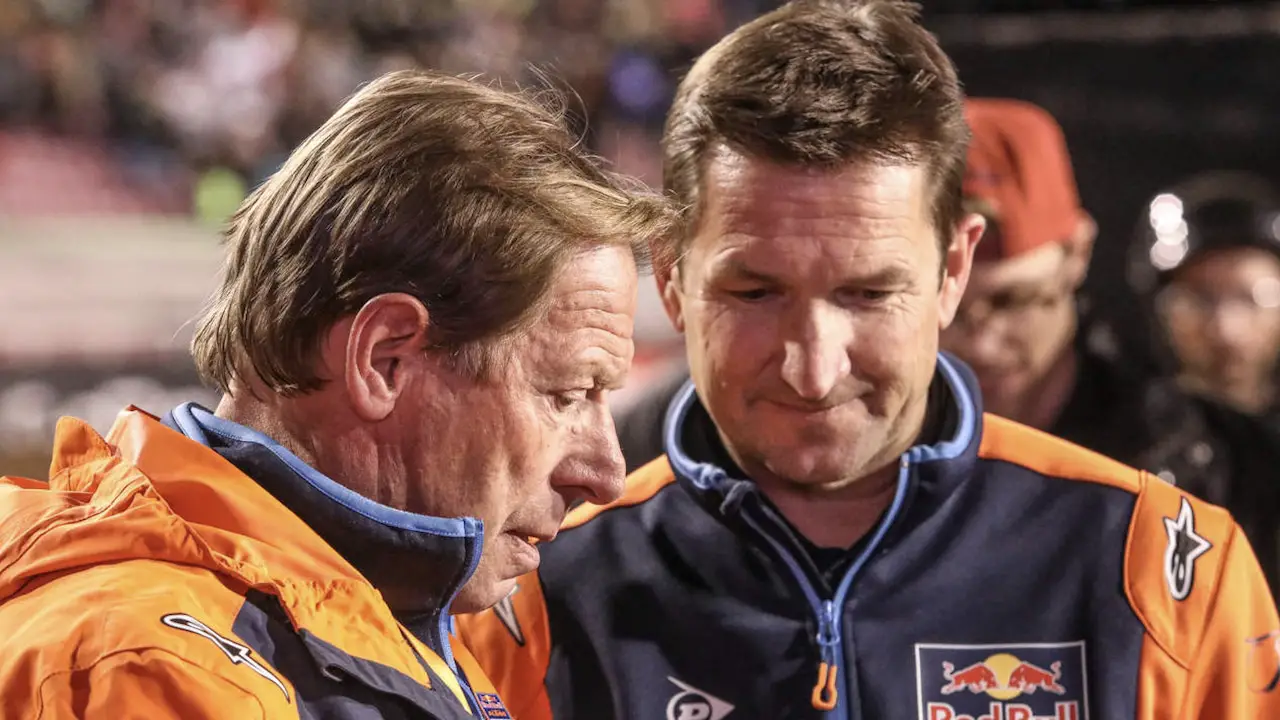
When Roger moved to KTM, he brought Ian Harrison with him from Suzuki and the quicky added Ryan Dungey.
THEN YOU RETURNED TO SUZUKI, RIGHT? Yes, I had begun getting phone calls from Sylvain Geboers, who was running the Suzuki Motocross GP team. We had been friends since we were teammates in the 1970s. I was not interested, but he kept calling me, telling me how things had changed at Suzuki, and they wanted to make a big comeback in American motocross. So, I flew to Japan, and in a big conference room they had all the guys that I worked with when I was racing for them—the old team managers, mechanics and engineers. It was a nice feeling. They convinced me to give it a try. While there, I learned that Sylvain had made a two-year deal with Greg Albertyn, where in the first year he would ride in the World Championships and then, in 1995, he would ride for me in America.
THIS IS A LOADED QUESTION. WHEN YOU WENT TO U.S. SUZUKI, WHAT DID THE RACE SHOP LOOK LIKE? It was disappointing. When I went to the Suzuki offices in Brea with Ian Harrison, who was then Albertyn’s mechanic, and asked them where the race shop was, I was greeted with silence. Finally, they said, “There is no race shop; they work in the parking lot, out of their trucks.” I was shocked.
WHAT ABOUT THE BIKES THEY WERE RACING? We had to hire some good mechanics. It was a huge challenge. We were working with Bill’s Pipes on the 125 side and Pro Circuit on the 250 side. Many times it would be midnight, and we would still be running the dyno. But everyone worked hard, and we won some titles. We won National Championships with Greg in 1999 and Travis Pastrana in 2000. Greg should have won in 1998, too. We had Jeremy McGrath in 1997, and he came so close to winning the Supercross Championship, but he had two major issues—one problem was a flat tire, and the other was a mechanic who made some big mistakes.
LATER YOU HIRED RICKY CARMICHAEL. HOW DID THAT COME ABOUT? I had talked to him several times, and then at Daytona he said he was interested. We were able to get a deal together. He trusted me and knew that I was not simply giving him a sales pitch. He believed what I said. He knew that I would give him the proper support and that we could win together. In 2005, he won the Supercross title on the 250 two-stroke and then won the outdoors on the 450 four-stroke.

DID IT COST A LOT TO GET RICKY TO COME TO SUZUKI? He took a big risk coming to an unproven team. We had made a deal with him where he was guaranteed good money and big bonuses. We ended up winning, and it worked out well for both of us.
RYAN DUNGEY WAS ANOTHER SPECIAL HIRE, RIGHT? He was an amateur B rider when we signed him. That was cool, and to this day that is one of the best experiences I have ever had with a rider. Before I even knew who he was, his dad and he would come around at some of the outdoor races and ask for advice. They were always super polite and interested in learning.
At some point, I invited him to come out to Glen Helen for a test. I really liked what I saw, and I worked out a deal with his mom where we would pay him by the points he earned. I calculated it in a way that if he won, he would be making a typical salary for a guy who was winning.
BUT THEN IT ALL WENT SOUTH AT SUZUKI AGAIN. WHAT HAPPENED? To this day, I have good relationships with the engineers and the race shop in Japan, but the upper management in Japan was useless, as well as the top Japanese manager in America. Mel Harris, who was the head American at U.S. Suzuki at the time, did everything possible to give us more support but could only do so much.
They quit on me twice, first as a rider, then as a team manager. I believe I am still the winningest GP rider ever on a Suzuki. I don’t think they had anyone else who won five World Motocross Championships. They did the same thing in Moto GP two years ago. It’s very sad, and I don’t understand it. I do feel bad for the engineers and racing people who are left.
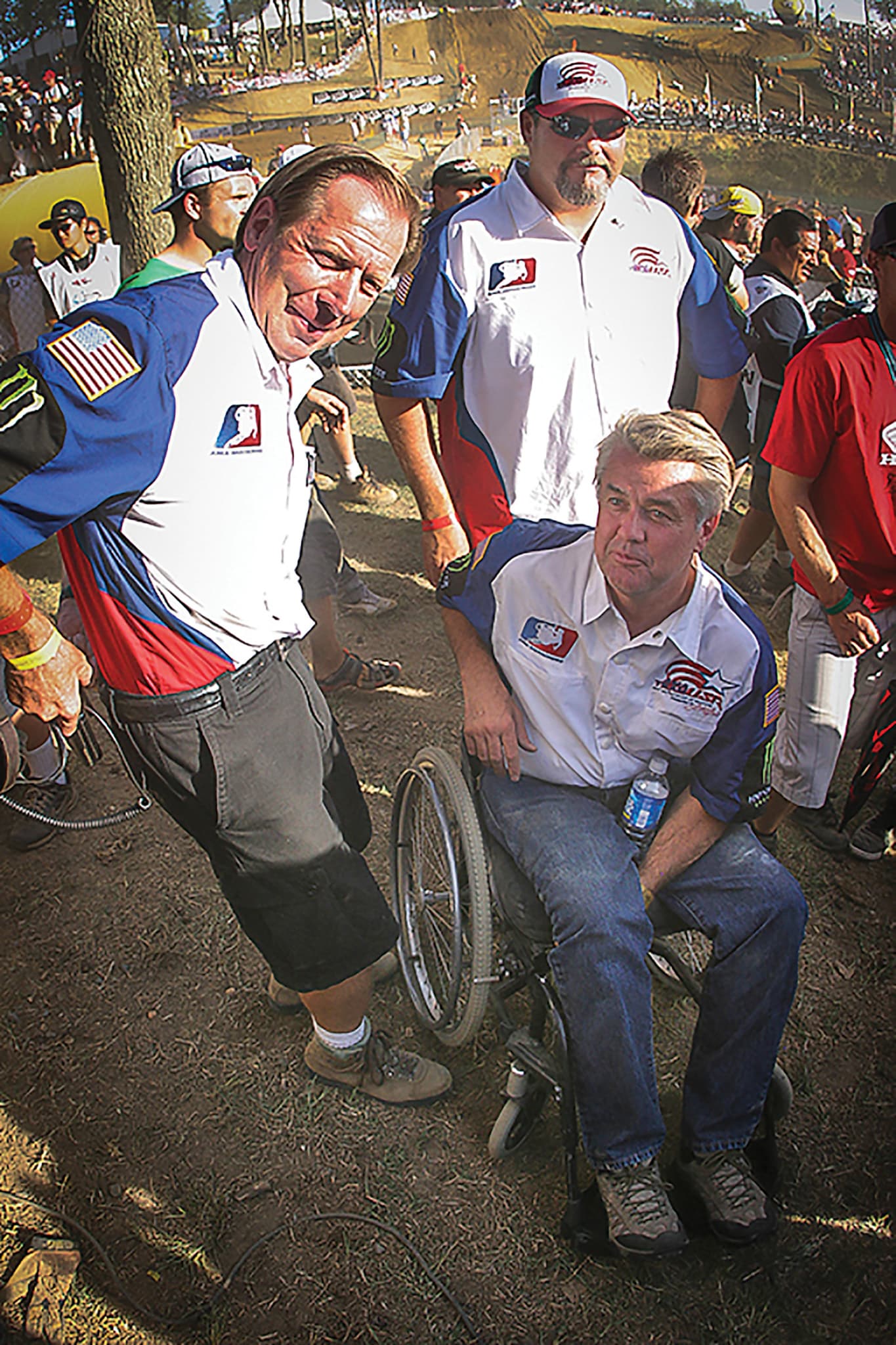
WHEN DID KTM ENTER THE PICTURE? KTM’s Selvaraj Narayana was always talking to me about them. I had known Sel for many years, and I had raced against him when he was managing the Maico team. But, initially, I had no interest in going to KTM. Sel kept asking because he knew my Suzuki contract was coming up.
I was planning on re-signing with Suzuki, but suddenly, I began to feel that the president of Suzuki, whom I could always walk into his office and talk to, was avoiding me. He was always saying, “Tomorrow, tomorrow we will talk.” I thought that I would stay at Suzuki for the rest of my career, but when they eventually offered me a contract, it was some type of partial contract. I didn’t feel it was right. I was very frustrated with Suzuki at that point. Finally, I asked Sel, “What would it be like at KTM?” The wheels were suddenly in motion with KTM. KTM’s Manager of Racing, Pit Beirer, flew in to talk to me. I also talked at length with my wife and with Ian Harrison, who was also frustrated at Suzuki.
KTM moved fast, and I felt like they really wanted me, so I signed the deal. Ryan Dungey wanted to come with me, but I told him to stay at Suzuki for one more year, as he was still under contract. At the time, KTM had the new 350SXF but a very dated 450SXF. I was able to convince them to build an all-new 450.
KTM HAD ALWAYS BEEN AN UNDERDOG IN MOTOCROSS. HOW DID YOU TURN IT AROUND? For sure, they were the underdog initially. But, after we got the new 450 and Ryan Dungey on board, he started winning, and we became the lead team for a while. We also won in the 250 class with Marvin Musquin and Kenny Roczen. Later we decided to move the 250 team outside to focus more on the 450, and that did not go so well for the 250 program. Later, when we expanded to the other brands with Husqvarna and GasGas, we were not small anymore but basically had the same people. Now, they were doing three teams. We had more mechanics, but we did not have the manpower to do everything like we were doing when we only had one brand.
“I LIKE TO SEE HOW THE GUY LOOKS ON THE BIKE AND SEE HOW HE RIDES IT. ONE OF THE MAIN THINGS THAT I TRY TO DETERMINE IS IF THEY TAKE RESPONSIBILITY FOR THE RESULTS OR IF THEY MAKE LOTS OF EXCUSES.”
THE 250 TEAM HAS NOT HAD MUCH SUCCESS AS OF LATE, BUT IF YOU READ THE BIKE TESTS, THE KTM 250SXF IS A VERY GOOD BIKE. WHAT’S MISSING IN THE 250 PROGRAM? We need to give it more attention. We need more people to be able to tailor the bike to the 250 riders and not let them guess at what is best.
ARE YOU INVOLVED IN THE SELECTION OF RIDERS FOR THE KTM, HUSQVARNA AND GASGAS TEAMS? Yes, I am involved. We have a good amount of freedom for the team managers from those teams, but it is all discussed before they finalize any choice or even before they approach any potential new riders.

ARE THERE SPECIFIC CHARACTERISTICS THAT YOU LOOK FOR IN A RIDER? I like to see how the guy looks on the bike and see how he rides it. One of the main things that I try to determine is if they take responsibility for the results or if they make lots of excuses. Like most team managers, I like riders who take responsibility and don’t blame somebody else.
IN 2022, THE 250SXF AND 450SXF RACE BIKES WERE COMPLETELY NEW, AND THE RIDERS STRUGGLED WITH THEM. WHY? That bike came quite late to us. I believe the base bike was very good, but we got lost in the settings. The riders kept saying it was “too stiff, too stiff, too stiff,” so we made it softer and changed the linkage. We did a lot of things, but basically we went in the wrong direction. Some of the blame falls on the riders, but we must also blame ourselves. We should have been smarter.
The race bike has not changed from last year to this year, and Cooper Webb won races on it and was in the hunt for the Supercross Championship until he got injured with three races to go.
It is the same bike, the same chassis. Nothing was changed on the chassis, and the only thing that we did was to go stiffer instead of softer on the suspension. It is easy to go the wrong way, and what the rider feels many times is the opposite of what is happening.
DO YOU THINK THE NEW $53 MILLION KTM FACILITY WILL IMPROVE THE RACE TEAMS? I think it will help in some areas and it will handicap us in other areas. Everything will be seen. Everything is very open, because we all work in the same building. Mostly, I think it should be a positive because I feel our staff, mechanics, and everyone who works there should see our commitment.

CAN YOU TALK ABOUT THE BAKER FACTORY AND THE IMPORTANCE OF IT? The way Aldon runs the place is first class. If you compare Aldon’s place to most places where practice tracks are, it’s like driving to a golf course rather than a dump. Most tracks are on a road with a bunch of potholes getting to it and broken-down fencing. At Aldon’s place, the fences are straight. They are clean. He built a huge berm around the property to keep the noise from traveling outside, and it looks nice.
I feel that the riders should be proud and happy that they can practice there instead of at the typical motocross track. I have seen a lot of videos of ClubMX, and that looks first class also. It is a little different because they cater more to amateur riders and enthusiasts, while Aldon’s is more of an elite training facility. Aldon has three Supercross tracks, an outdoor track, and we have a nice, air-conditioned workshop. There is a very proper gym. There is even a photo studio on the property. It is not the place where people come to learn how to ride. It is a place for top riders who are willing to put in the work.
MORE AND MORE TEAMS HAVE ADOPTED THIS STYLE OF TRAINING COMPOUND. DO YOU FEEL IT’S A NECESSITY? I am of the point of view that you can be a top rider without being with Aldon or someone like him, but very few riders have the discipline to do all the work. If you look at Eli Tomac, he trains mostly by himself, but he has the discipline to do it. He does not need Aldon to watch him or push him. Cooper Webb, on the other hand, needs the discipline. He has the talent and race craft. He is a smart tactician in the races, but he tends to cheat on the physical work. He even told us that himself when we first contracted him.
WHO MAKES THE DECISION ON WHICH RIDERS SHOULD GO TO ALDON? For Cooper, we made the decision that he should go at the end of 2018 when we first contracted him. It was one of the conditions that he would have to train at Aldon’s. He then won the title in 2019. In 2020, Cooper decided he wanted to leave Aldon. We did not want him to leave, but he insisted and finally found somebody who said yes. We know how that turned out.
In 2020, he could have won the championship if it were not for the crash in Dallas. Then he won again in 2021, but decided he wanted to get out, and again it did not work out so well.
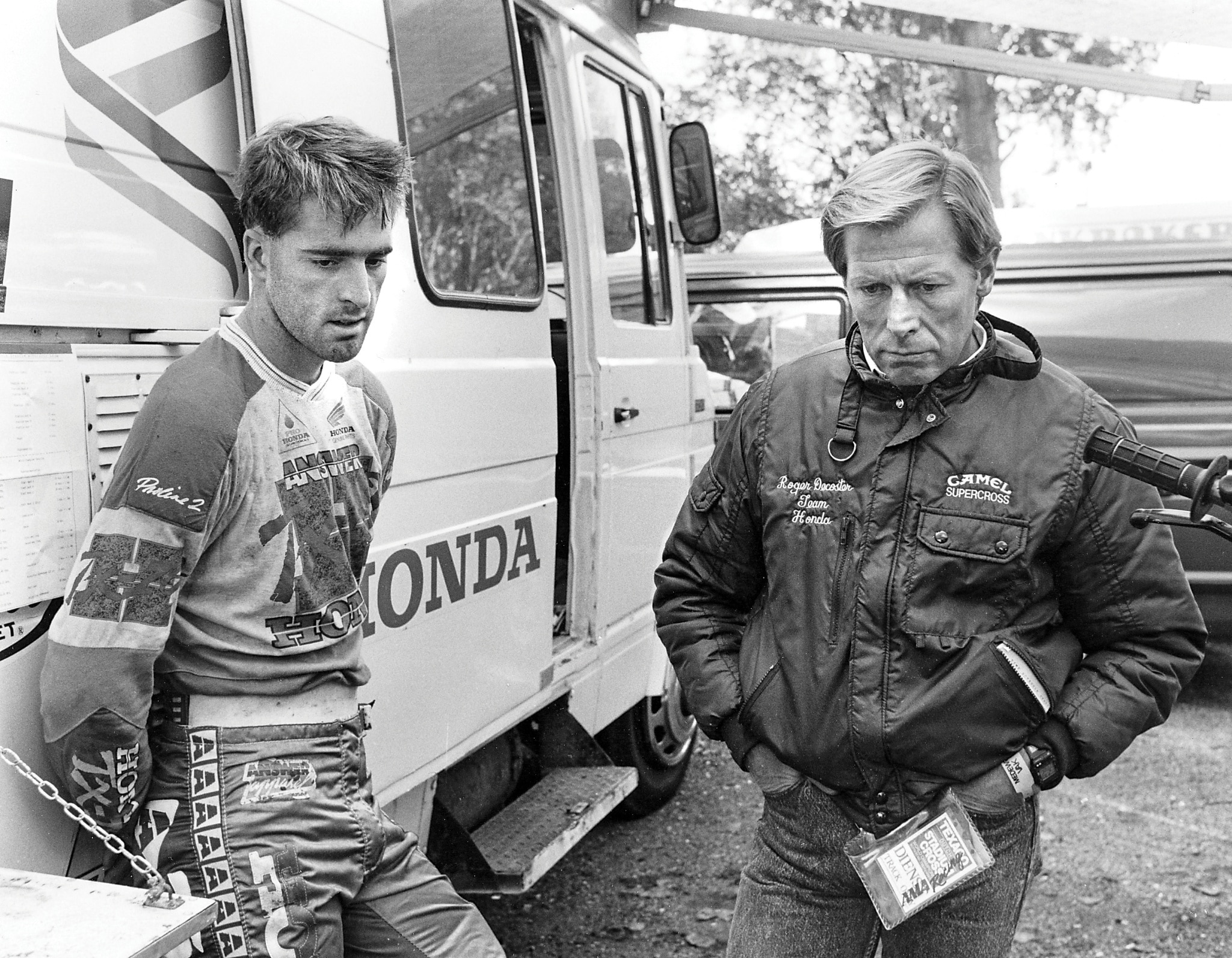
TALKING ABOUT COOPER, OBVIOUSLY IT WAS VERY DISAPPOINTING FOR HIM, THE TEAM AND THE FANS WHEN HE GOT INJURED IN DENVER. We had a real chance to win the 2023 Supercross Championship, especially with what happened to Eli Tomac the following week. That is one of the problems of our sport; we have too many injuries.
IS THERE ANY WAY TO REDUCE THE ASTOUNDING INJURY RATE? We have been talking to Feld and MX Sports, and they now are working on trying to collect all the information on how, where and what motorcycles the riders have been hurt on. The entire industry is worried, but it is not so easy to come up with a solution. The easiest answer would be to go back to two-strokes, but that is not going to happen.
WHAT ARE YOUR THOUGHTS ON THE COMPETING FIM WORLD SUPERCROSS CHAMPIONSHIP? We already have 31 events a year at a high level, and now they want us to do more. It is not sustainable. There is not enough talent to have series competing against each other for the same riders and dates. On the business side, the AMA Nationals help dirt bike sales and create places to ride. If it were not for the Nationals, a lot of other outdoor events would disappear.

Roger’s motocross career has spanned the 1960s, 1970s, 1980s, 1990s, 2000s, 2010s and 2020s.
LET’S TALK ABOUT YOU PERSONALLY. IT’S COOL THAT YOU ALWAYS TAKE TIME AT THE RACES TO SIGN AUTOGRAPHS AND TALK TO THE FANS. I do it because I want to promote our sport, and I feel it is important to those people. Sometimes I am embarrassed to sign autographs in front of my riders because it has been many years since I stopped racing, but I want people that come to the races to be happy. It is amazing that even though it’s been a long time since I stopped racing, people still bring pictures, shirts and hats for me to sign. People have kept these mementos for so long and still make the effort to bring them to a race for my signature. I feel that this is the least I can do.
YOU MIGHT GET ASKED THIS A LOT: DO YOU EVER ENVISION RETIRING? I don’t want to think about retiring. I see too many people who are around my age or younger that retire, and a year or two later, they get senile or pass away. As long as I can do productive things, I will keep going. Too many of my peers have recently passed away.
WHAT IS YOUR BEST MEMORY SINCE YOU RETIRED FROM RACING? As the Suzuki team manager, it was when we won the 2009 des Nations with Ryan Dungey in Italy. As the KTM team manager, it was the brand’s first Supercross victory in Phoenix with Ryan Dungey. I got lucky; I have a lot of good memories.





Comments are closed.